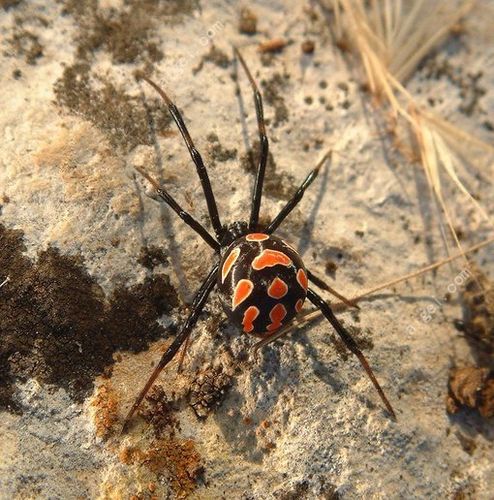
Understanding the Brown Black Widow Spider Bite
The brown black widow spider, also known as Latrodectus geometricus, is a venomous arachnid that can cause severe reactions in humans. If you’ve ever encountered this spider or are curious about its bite, this article will provide you with a comprehensive overview of the brown black widow spider bite, its symptoms, treatment, and prevention measures.
What is a Brown Black Widow Spider Bite?
A brown black widow spider bite is characterized by a small, puncture wound that may not be immediately noticeable. The spider’s venom contains powerful neurotoxins that can lead to a range of symptoms, from mild to severe. While the bite itself is not usually fatal, it can be extremely painful and requires medical attention.

Identifying a Brown Black Widow Spider
Identifying a brown black widow spider is crucial for understanding the risk of a bite. These spiders are typically about 1.5 inches long and have a shiny, black body with a red hourglass-shaped marking on their abdomen. Their legs are long and spindly, and they have a distinctive, dark brown coloration.
Common Symptoms of a Brown Black Widow Spider Bite
The symptoms of a brown black widow spider bite can vary from person to person, but some common signs include:
| Symptom | Description |
|---|---|
| Pain | Immediate, sharp pain at the bite site |
| Swelling | Local swelling around the bite area |
| Redness | Redness and inflammation around the bite |
| Severe Muscle Pain | Severe muscle pain, often in the abdomen, back, and legs |
| Abdominal Cramps | Abdominal cramps and pain |
| Nausea and Vomiting | Nausea, vomiting, and diarrhea |
| Feeling of Weakness | Feeling of weakness and dizziness |
Diagnosis and Treatment
If you suspect you’ve been bitten by a brown black widow spider, seek medical attention immediately. A healthcare professional will examine the bite site and may perform additional tests, such as blood tests, to confirm the diagnosis.
Treatment for a brown black widow spider bite typically involves:

- Administering antivenom, if available
- Managing pain with over-the-counter pain relievers, such as ibuprofen or acetaminophen
- Applying a cool, wet compress to the bite area to reduce swelling and pain
- Monitoring for signs of severe symptoms, such as difficulty breathing, confusion, or severe muscle spasms, which may require hospitalization
Preventing Brown Black Widow Spider Bites
Preventing a brown black widow spider bite involves taking certain precautions, such as:
- Wearing gloves when handling wood, rocks, or other items that may harbor spiders
- Sealing gaps and cracks in your home to prevent spiders from entering
- Using a vacuum cleaner to remove spiders and their eggs from your home
- Keeping your yard well-maintained, as overgrown vegetation can provide a habitat for spiders
- Being cautious when exploring dark, undisturbed areas, such as crawl spaces or attics
Conclusion
The brown black widow spider bite can be a painful and distressing experience, but with proper treatment and prevention measures, you can minimize the risk of complications. By understanding the symptoms, diagnosis, and treatment options, you can be better prepared to handle a brown black widow spider bite if it occurs.





